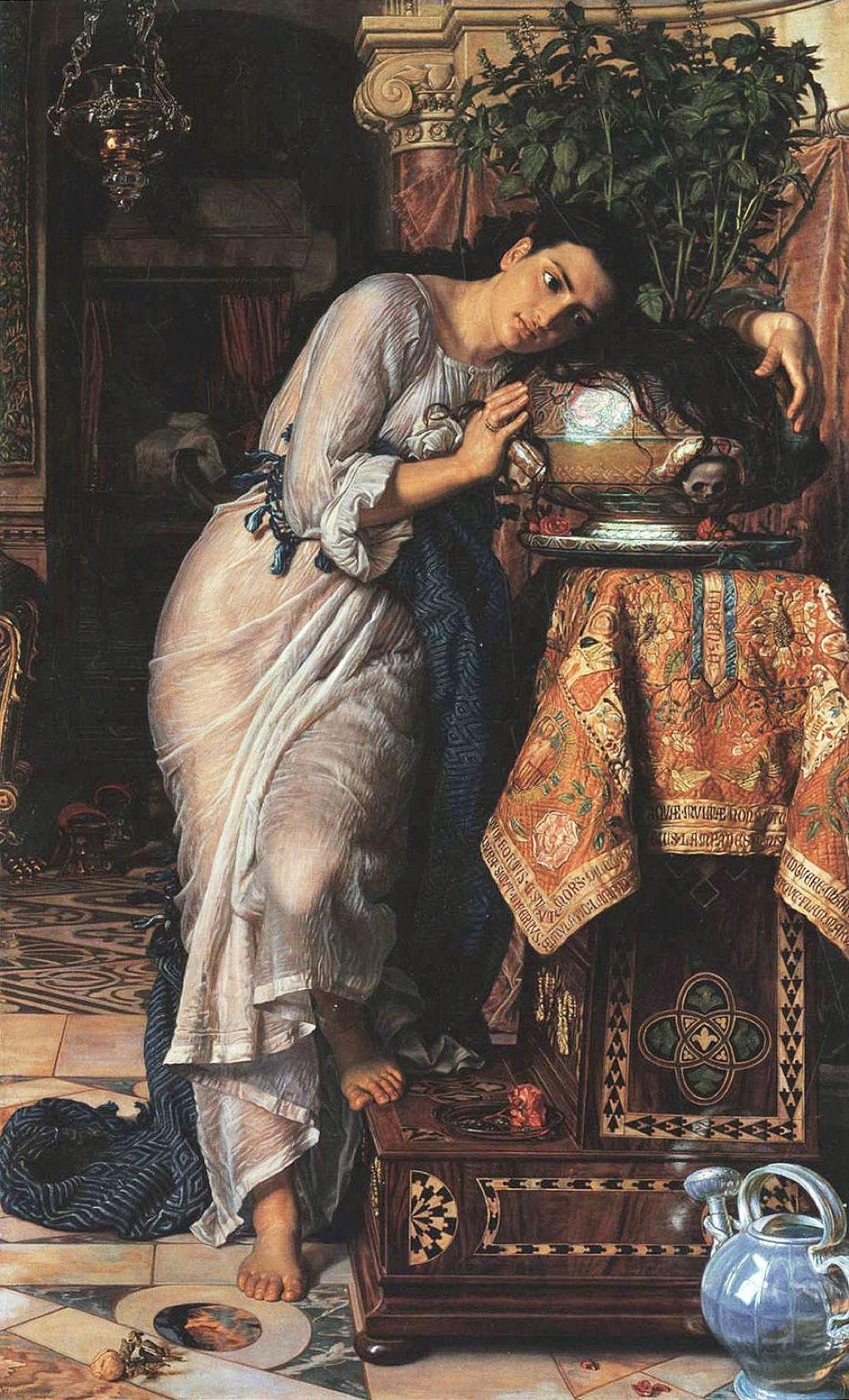The Virgin Who Wasn’t: Irony and Image in the Tale of Alatiel
Boccaccio’s Decameron is filled with tales that amuse, provoke, and challenge social norms. One of the most fascinating—and darkly ironic—is Day 2, Tale 7, the story of Alatiel, a beautiful Saracen princess whose adventures blur the line between appearance and reality. While the tale is steeped in humor and coincidence, it also explores deeper themes of reputation, hypocrisy, and the power of narrative over truth. In the end, it’s not virtue that matters, but how well you can fake it.
📝 Summary
Alatiel, the daughter of the Sultan of Babylon, is on her way to marry the King of Algarve when her ship wrecks. Though rescued, she begins a long, convoluted journey through the Mediterranean, where she is passed from one man to another—sometimes through love, sometimes through violence. Despite sleeping with at least eight different men, her beauty and silence protect her. Eventually, she’s reunited with a man who knows her identity and helps return her to her father. When asked about her experience, she fabricates a story of chastity and virtue. Her father believes her and successfully marries her off as a virgin bride to the King of Algarve—none the wiser.
🔍 Analysis
Theme and Moral
The central theme of Alatiel’s tale is the triumph of image over truth. It’s a brutal satire of medieval values, particularly those related to female chastity and honor. Boccaccio plays with the idea that what matters in society is not what one is, but what one appears to be. As long as Alatiel presents herself as a virgin, and her story is convincing, her past is irrelevant.
The moral? Truth can be manipulated, and social systems often reward fiction over reality. It’s a cynical but sharp observation of how reputation, especially for women, was built not on actual virtue but on perception and silence.
Characters and Their Roles
-
Alatiel is at the center of this tale. Though she’s often a passive figure—acted upon rather than acting—her final decision to lie about her past gives her narrative power. It’s her story, not her truth, that shapes her future.
-
The men in her life are a revolving cast of possessors and victims of desire. They value Alatiel for her beauty and status but don’t see her as a person. Many abuse her, some love her, but none ultimately understand her.
-
The Sultan, her father, and the King of Algarve, her final husband, are emblematic of male obsession with purity and appearance. Ironically, their satisfaction rests on a false narrative, reinforcing Boccaccio’s critique.
Literary Devices
The story is heavy with irony, especially dramatic irony. The reader knows Alatiel is far from a virgin, making her wedding and public honor both ridiculous and tragic. Boccaccio uses humor to soften the darker implications of rape, captivity, and gendered power dynamics—a literary move that invites both laughter and discomfort.
There’s also subtle symbolism in Alatiel’s journey: the sea voyage, the changing hands, and the recurring theme of being “rescued” only to be objectified again. Her tale is a metaphor for the fragility of female agency in a patriarchal world.
Historical Context and Modern Relevance
In 14th-century Europe, a woman’s virginity was tied to her social and marital value. This story directly mocks that ideal. Boccaccio seems to say: if you believe that value is based on physical purity rather than character, then you’re easily fooled—and deserve to be.
Today, Alatiel’s story resonates in conversations about reputation, image culture, and the performative expectations placed on women. Whether it’s through social media or societal pressure, many still feel forced to maintain an image that doesn’t reflect their lived experience. Alatiel’s silence and final lie highlight how often women are made to hide their truth to survive or succeed.
💭 Personal Response
This tale left me both amused and uneasy. I admired the complexity of the narrative and Boccaccio’s clever use of irony, but I was also struck by how little control Alatiel had for most of the story. Still, her final act—constructing her own version of the truth—was strangely empowering. It was unsettling, though, to see how easily society accepted her falsehood as long as it fit their expectations. I didn’t enjoy the story in the traditional sense, but I found it intellectually provocative and unforgettable.
✅ Conclusion
The tale of Alatiel is a sharp, ironic take on virtue, image, and hypocrisy. It reveals a society more concerned with appearances than with truth and offers a biting critique of how women’s value has historically been measured. In our own time, when curated identities and public perception still shape lives, Alatiel’s story remains deeply relevant. It challenges us to ask: What do we really value—truth, or a convincing lie?







